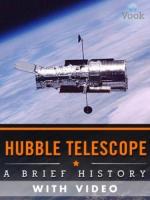|
This section contains 944 words (approx. 4 pages at 300 words per page) |

|
The Hubble Space Telescope (HST) is a large Earth-orbiting astronomical telescope designed by the U. S. National Aeronautics and Space Administration (NASA) and the European Space Agency (ESA). Hubble observes the heavens from 380 miles above Earth, relaying pictures and data captured above the distortions of Earth's atmosphere. The HST is named after American astronomer Edwin Hubble, who early in the twentieth century provided evidence of an expanding universe consisting of many galaxies beyond our Milky Way galaxy. The HST has provided scientists with the clearest views yet obtained of the universe. Moreover, stunning images and spectrographic data sent from the HST provide scientists with critical data relevant to studies regarding the birth of galaxies, the existence of black holes, and the workings of planetary systems around stars.
Deployed from the space shuttle Discovery on April 25, 1990, the Hubble Space Telescope was the culmination of a...
|
This section contains 944 words (approx. 4 pages at 300 words per page) |

|


